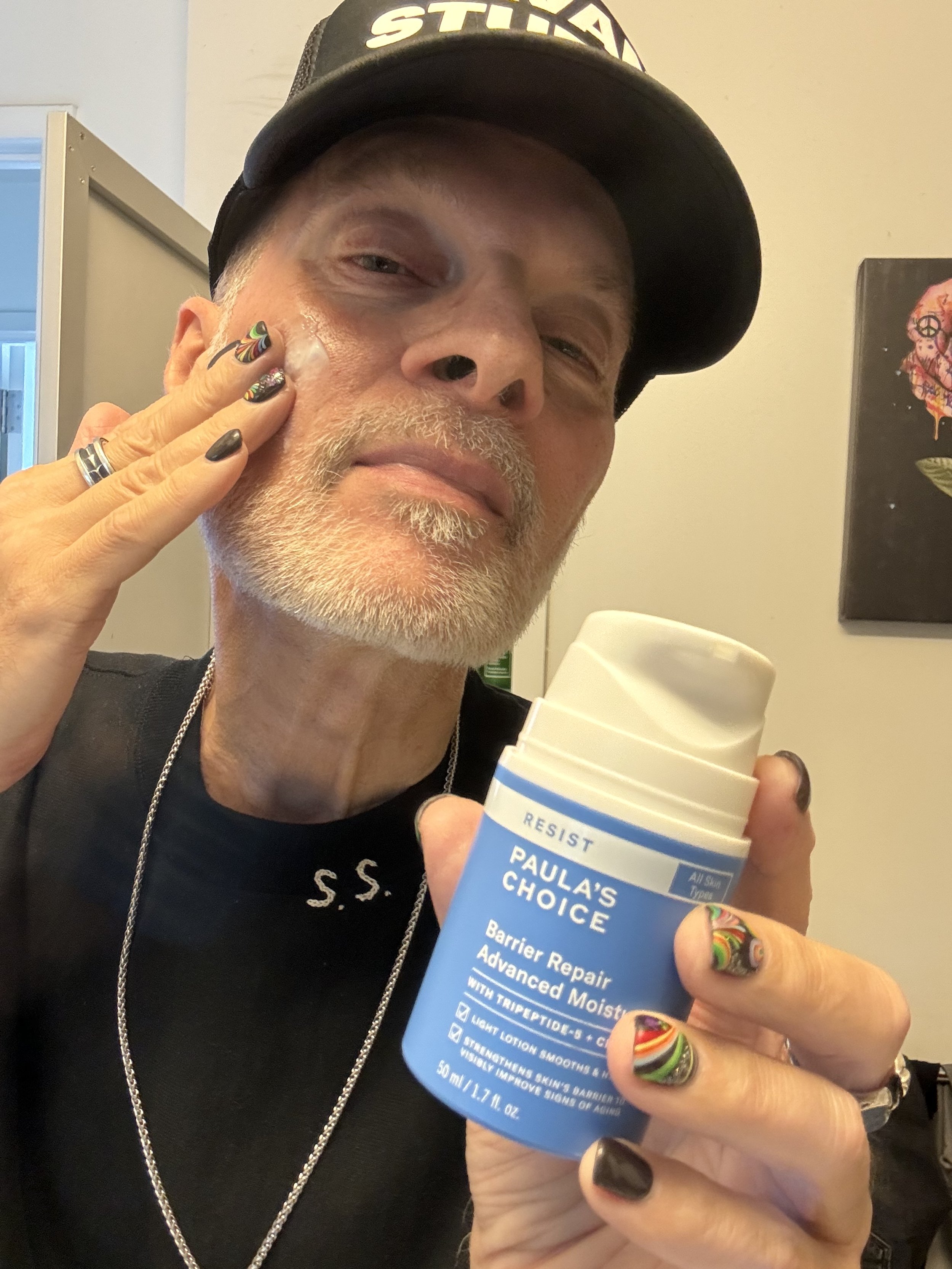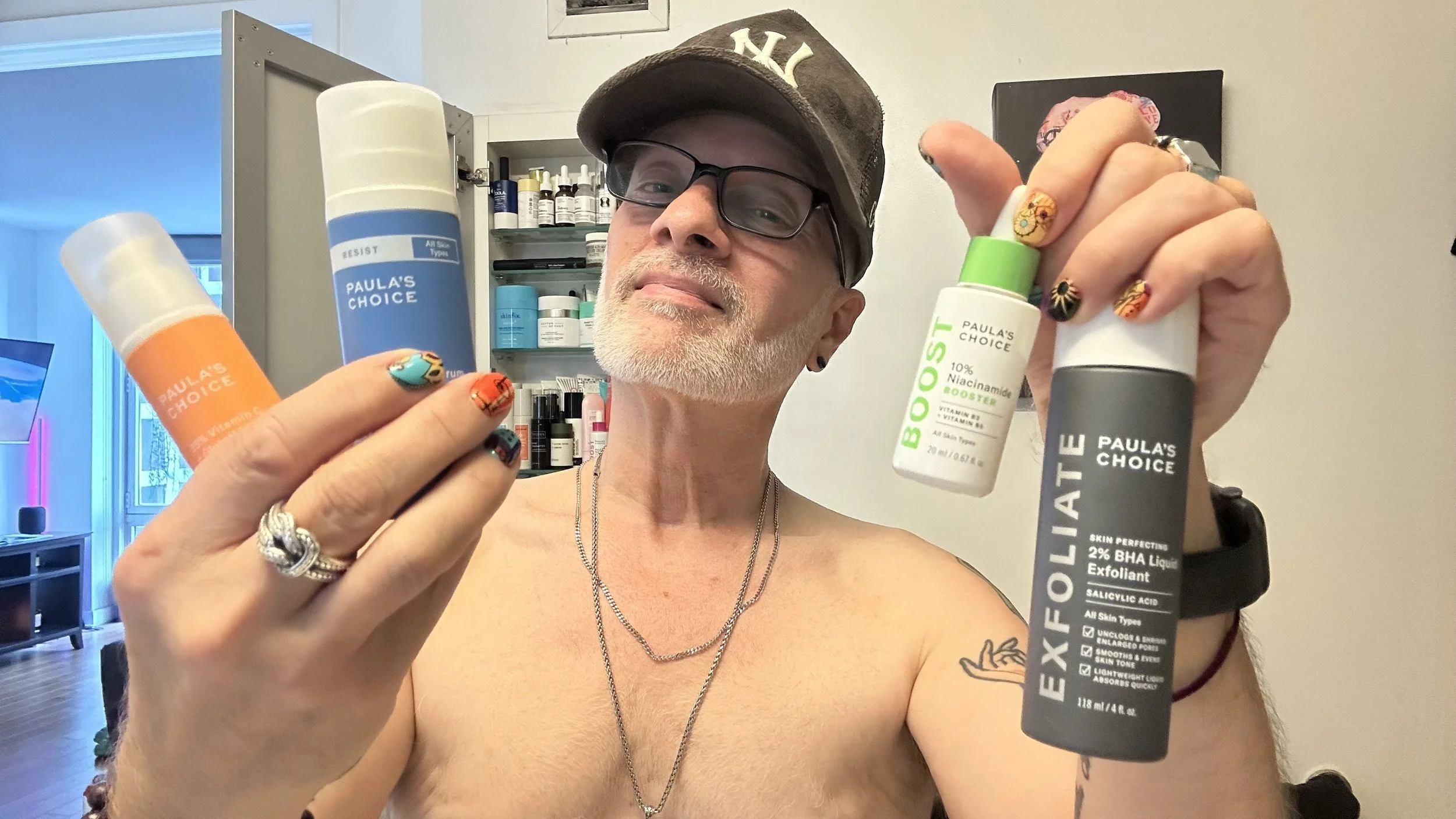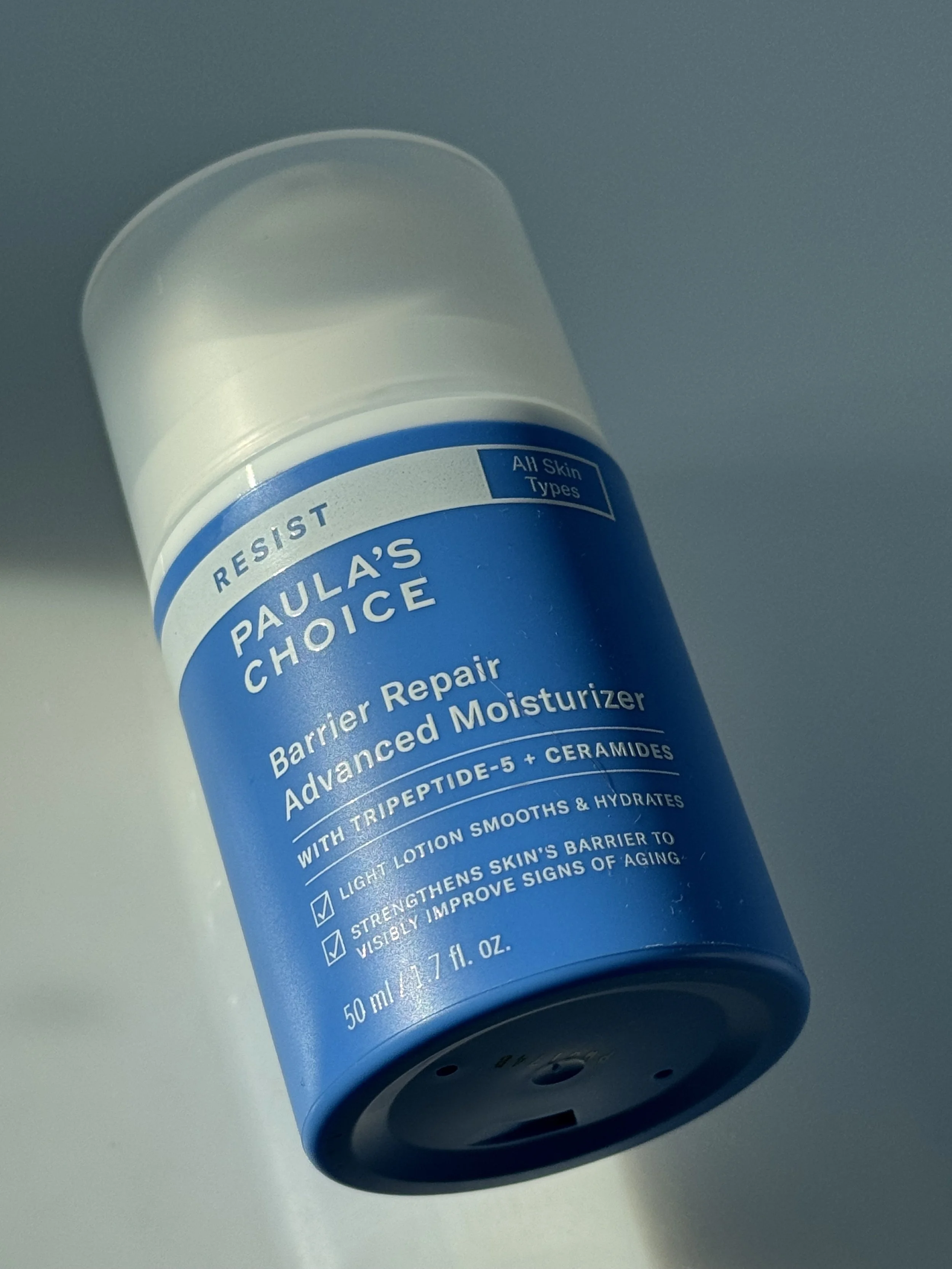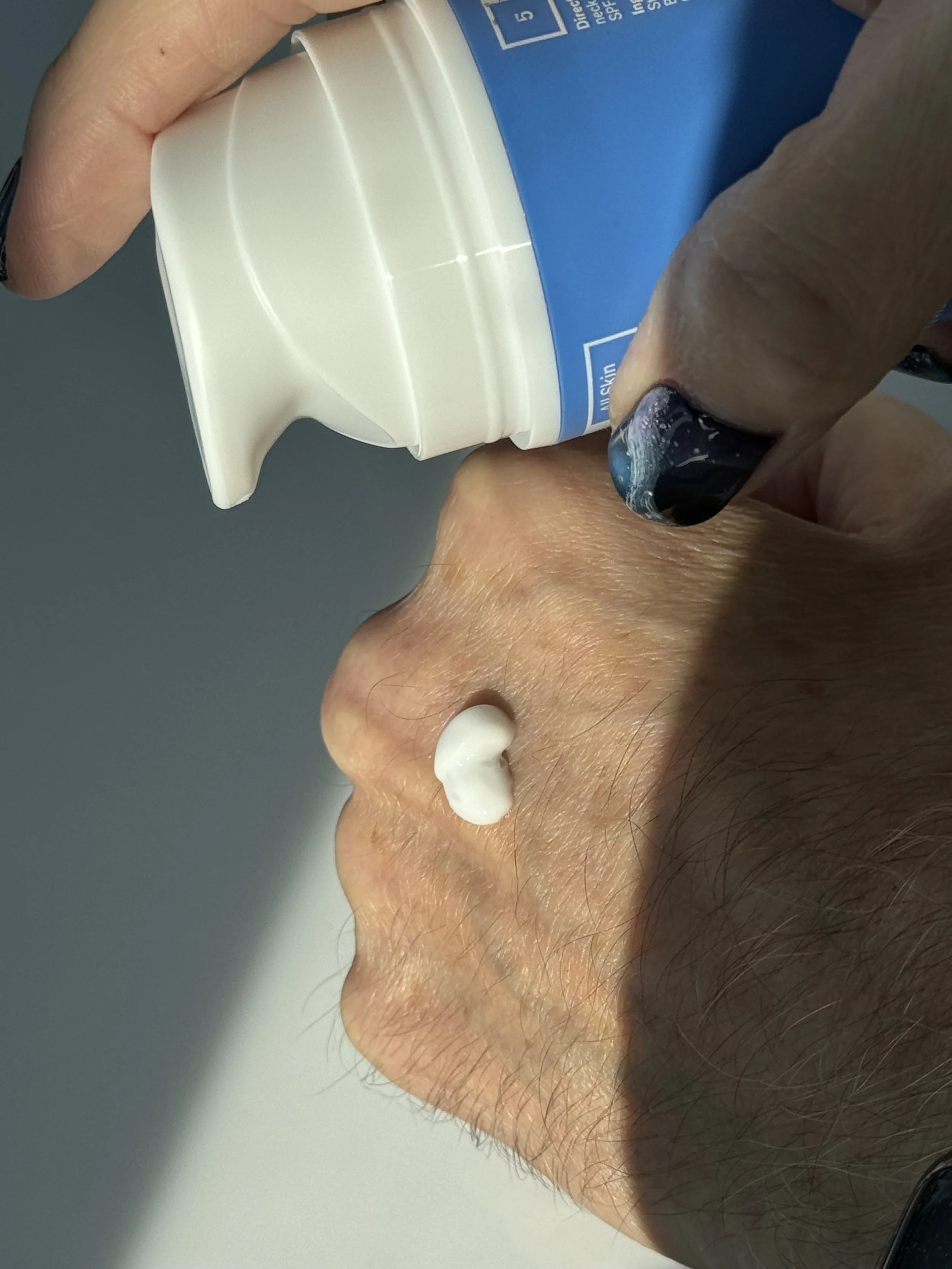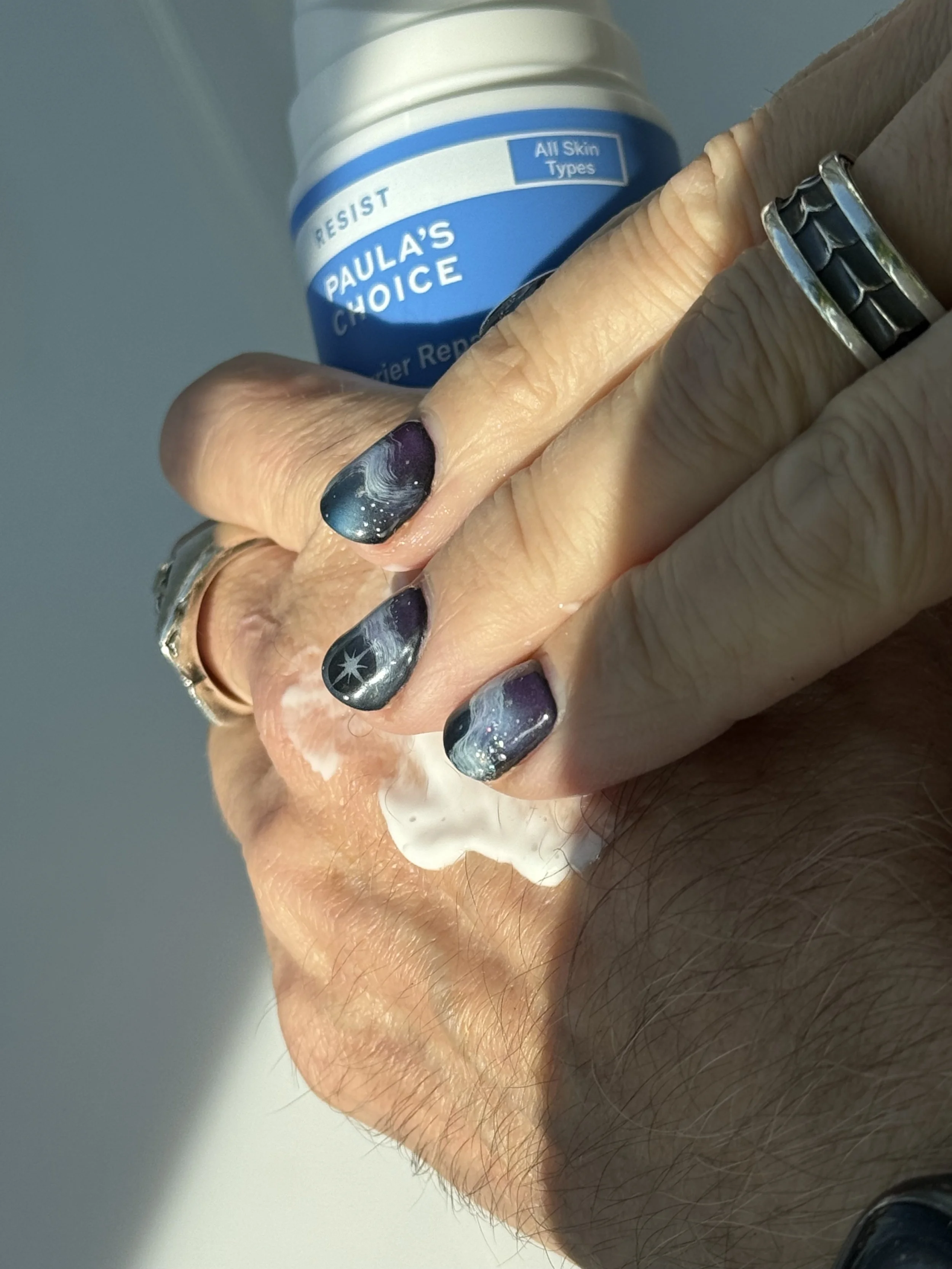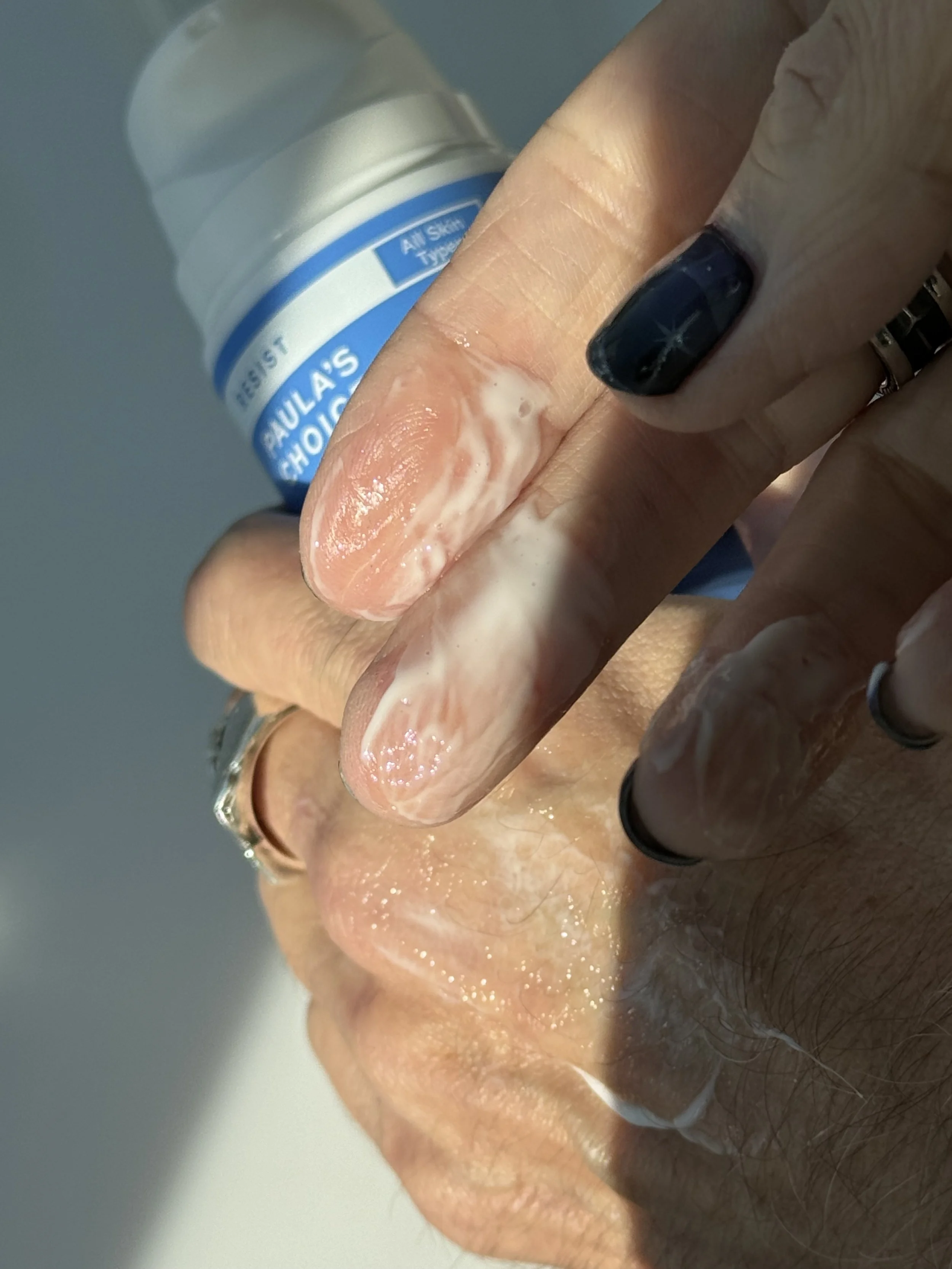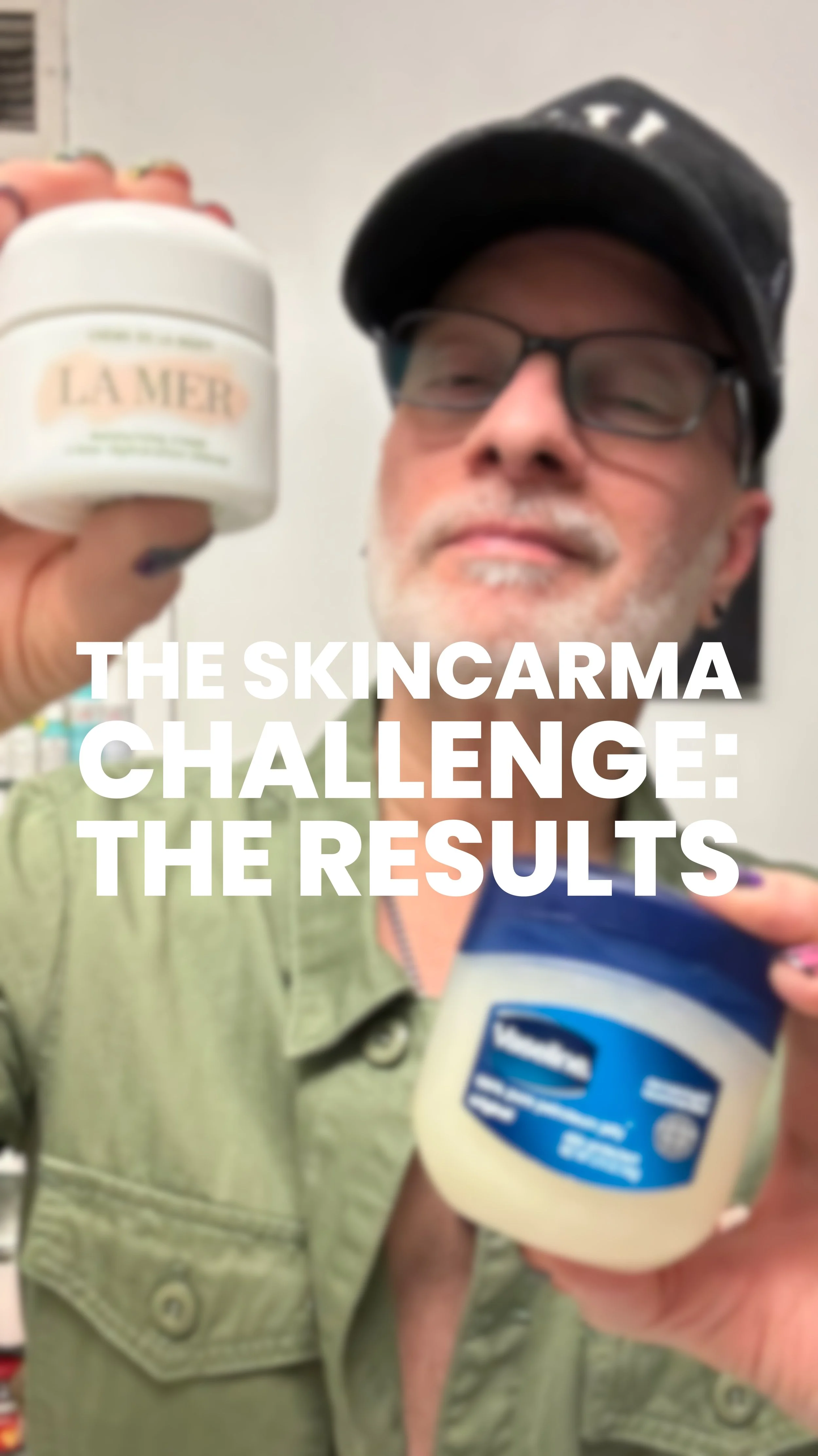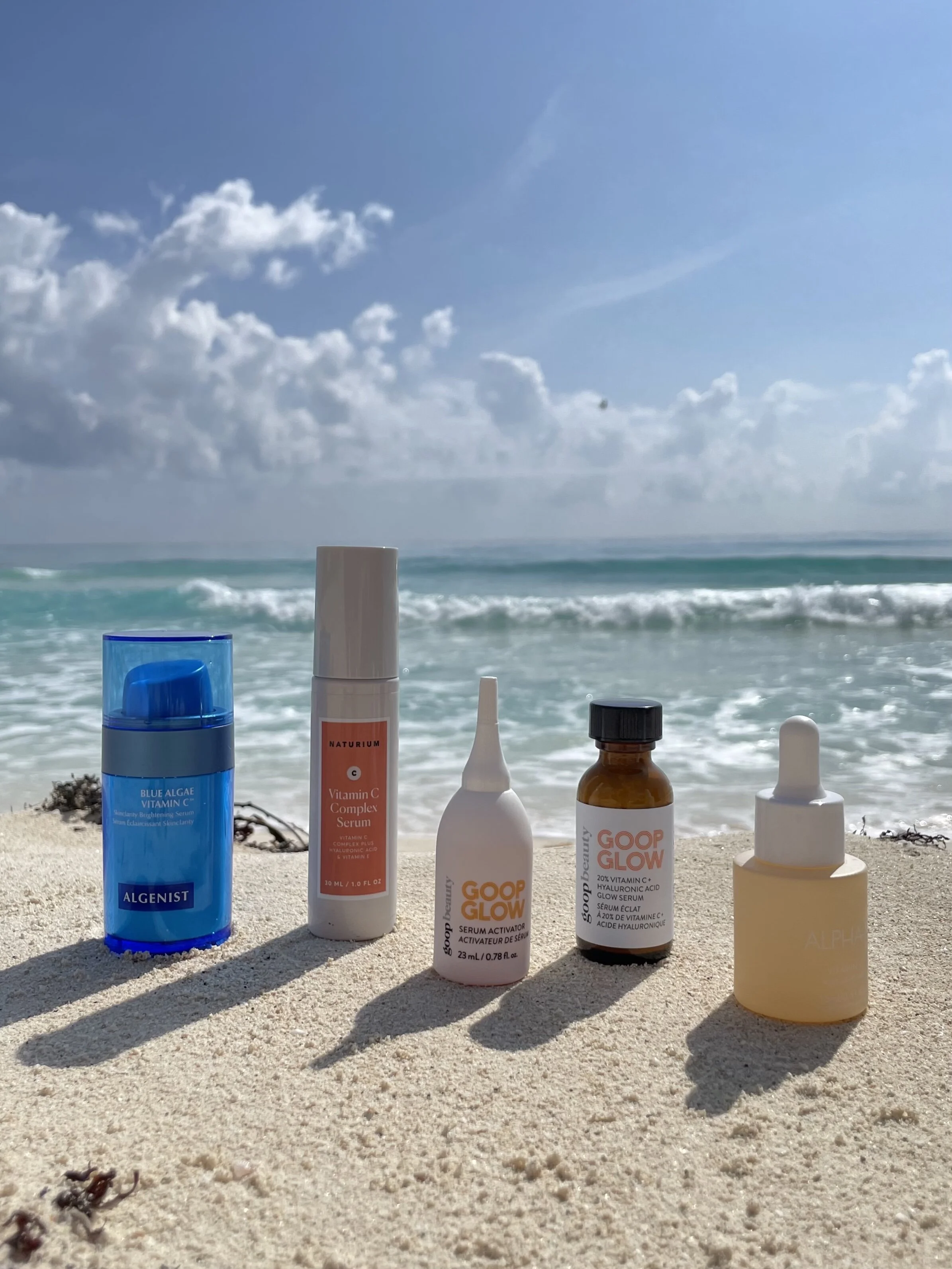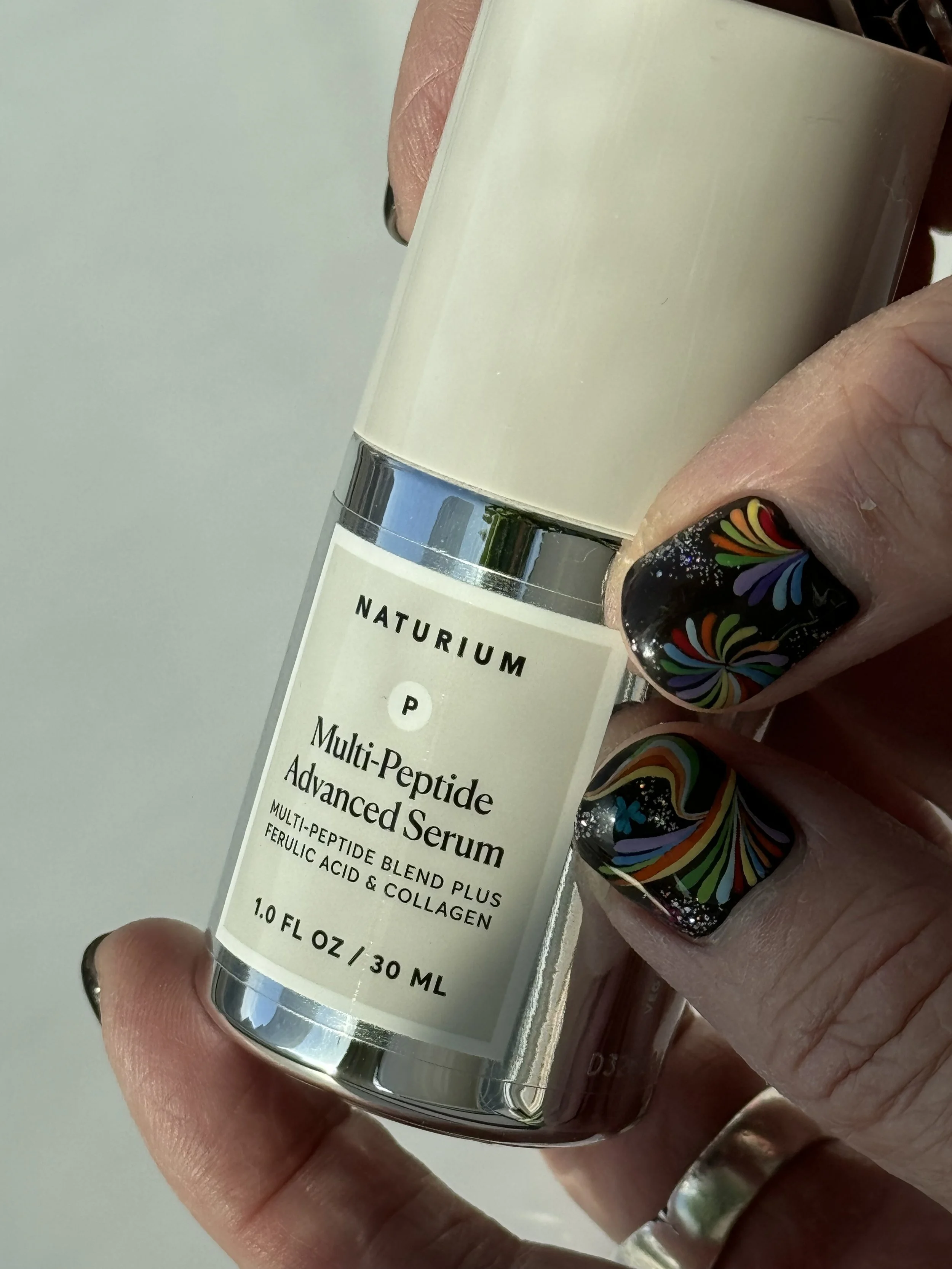PRODUCT REVIEW: PAULA'S CHOICE RESIST BARRIER REPAIR ADVANCED MOISTURIZER - How can you tell your skin barrier is damaged? What do ceramides do? What is Tripeptide-5?
PAULA'S CHOICE RESIST BARRIER REPAIR ADVANCED MOISTURIZER
The role of the skin barrier and the vital importance of skin barrier health have only recently become a trending topic in skincare.
As a skincare copywriter for more than two decades now, I’m intrigued by skincare trends – and this one is a long time coming.
Several years ago, I remember writing packaging copy for a new facial moisturizer and I’d referred to the skin barrier in the romance copy on the product’s carton.
The marketing team pushed back on my use of the phrase believing it was too pedantic for consumers to connect with. I believe their feedback was that the term ‘skin barrier’ would “go over their heads”. And so I removed it, generalizing the copy to refer to skin health more broadly.
Fast forward to today and the skin barrier is one of the hottest topics in skincare. I never agreed with the characterization that consumers wouldn’t understand what the skin barrier is and why it’s an important distinction to make; but it’s great to see marketers now positioning products as replenishing, repairing and restoring the skin barrier.
I love what brands like Skinfix, The Ordinary and Paula's Choice are doing today to educate skincare consumers on the importance of skin barrier maintenance. And consumers deserve a lot of the credit for understanding its role in their overall skin health.
It starts with a great moisturizer! Packed with barrier-supporting actives, the newly reformulated Paula’s Choice Resist Barrier Repair Advanced Moisturizer is one of my favorite face creams for replenishing my skin barrier each day. More on this superb formula from Paula’s Choice below…
BEST PAULA’S CHOICE PRODUCTS
Over the past year, skincare marketers have elevated the concept of the skin barrier as consumers have sought products that help them maintain their barrier health and even fix a damaged skin barrier.
For many years, the leader in skin barrier health has been Skinfix. The brand has long espoused the importance of lipid replenishment in maintaining a healthy barrier. Lipids like ceramides, cholesterol and fatty acids are essential to a properly functioning skin barrier and to preventing trans-epidermal water loss (TEWL) – the escape of moisture through the skin’s outermost layers and the leading cause of dehydration.
And in the competitive beauty industry, no one has done a better job of educating on the essential nature of lipids like ceramides to healthy-acting skin than Skinfix.
For the past five years, the Skinfix barrier+ Triple Lipid-Peptide Cream has been my go-to moisturizer for preserving my skin health in the harsh, low-humidity air of the late fall and winter months. What makes Triple Lipid-Peptide Cream the best cold weather face cream?
PRODUCT REVIEW: SKINFIX BARRIER+ TRIPLE LIPID-PEPTIDE FACE CREAM
Well, TLPC is super rich, to start. If you’re familiar with another moisturizing classic, the CeraVe Moisturizing Cream, then you know what I mean by thick and rich!
Consistently one of the best facial moisturizers at Sephora, the Skinfix formula’s blend of replenishing lipids keeps skin soft and supple in low-humidity air. It literally prevents my skin from drying out – no small feat when it’s 20 degrees outside.
Importantly, Skinfix’s iconic TLPC moisturizer is clinically proven to increase “the quantity of lipids in the skin barrier including ceramides and fatty acids by 212%” in 28 days.
Trust me – in intensely cold, dry air you’ll want TLPC on your face, too!
Psst…catch my Skinfix Triple Lipid-Peptide Cream product review on the blog here.
What do ceramides do?
“Think of ceramides as the mortar between bricks—if the bricks are your skin cells. Ceramides help hold skin together by forming a protective layer that limits moisture loss and protects against visible damage from pollution and other environmental stressors.”
PRODUCT REVIEW: THE ORDINARY SOOTHING & BARRIER SUPPORT SERUM
Two months ago, The Ordinary introduced their new skin barrier strengthening serum. With its characteristic hot pink hue, The Ordinary’s Soothing & Barrier Support Serum has become one of the brand’s most successful launches in years. And I don’t think it’s just because it’s a trendy shade of pink!
At $17, the new Soothing & Barrier Support Serum is packed with actives that support a heathy barrier and help repair skin barrier damage. Among its cocktail of actives are 2% Niacinamide, Bisabolol and Vitamin B12 – the reason for the formula’s pink TikTok-worthy appeal.
The Ordinary’s social media sensation isn’t the first product the brand has offered that supports skin barrier health. Multiple product icons from The Ordinary are powered by actives essential to a healthy barrier, including Natural Moisturizing Factors + Beta Glucan, the Niacinamide 10% + Zinc 1% oil-control serum and The Ordinary’s Multi-Peptide + HA Serum – formerly known as “Buffet”.
But it is the first product that’s positioned specifically to improve skin barrier health. For sure, the concept of the ‘skin barrier’ and its importance to healthy skin is getting the attention it deserves. My use of the term in packaging copy 10 years ago may have been premature, but it was also prescient…
CATCH THIS NEW VITAMIN C SERUM IN ACTION!
Before I get into my detailed Paula's Choice Resist Barrier Repair Advanced Moisturizer product review just below, I wanted to explore some of the most frequently asked questions about the skin barrier as well as the technologies specific to the new Paula's Choice formula...
1. How can you tell your skin barrier is damaged?
Some of the most common skin concerns are also signs of a damaged skin barrier. Also known as the stratum corneum, the skin barrier is the outermost layer of your skin – the one that faces the world every day and serves as a protective shield against environmental stressors.
Among the visible signs that your skin barrier may be damaged or otherwise compromised are:
Increased sensitivity: If your skin suddenly becomes more sensitive to products that previously gave you no issues, it could be a sign that your skin barrier is damaged. Sudden concerns may include stinging, burning, redness or irritation when applying a serum, cream or other treatment you were okay with.
Dryness and dehydration: A compromised skin barrier is less efficient at retaining water, often leading to a loss of moisture, leaving your skin feeling dry or dehydrated.
Rough skin texture: If your skin feels rougher or suddenly appears flaky, it may be the result of a damaged skin barrier. Roughness is often caused by dehydration and the breakdown of the skin’s surface barrier.
Redness and inflammation: A damaged skin barrier is less efficient at protecing against irritants and allergens, which can lead to redness, outbreaks of rash, and swelling of the skin.
Itchiness, tightness and discomfort: Compromised skin barriers are often itchy, a sign of irritation and dryness. And, a tight sensation or other discomfort, especially after cleansing, can indicate that your skin is stripped of its natural oils, leaving the barrier compromised.
Acne or eczema flare-ups: A damaged or weakened barrier can have micro-tears or tiny cracks, which allow bacteria and irritants to easily penetrare your skin. This often results in acne breakouts or other skin conditions like eczema or rosacea.
Explore my picks of the best Paula’s Choice products on the blog here.
Sources: The Cleveland Clinic: How To Tell if Your Skin Barrier Is Damaged and What To Do About It; Byrdie: How to Tell if Your Skin Barrier Is Damaged
2. How do you fix a damaged skin barrier?
If you think your skin barrier may be damaged, it’s a good idea to make changes in your skincare routine to support barrier repair. It’s a lot easier than it sounds! Fixing a damaged or compromised skin barrier involves using gentle, hydrating toners, serums and creams; lipid-rich face creams and serums; and, most importantly, avoiding the use of harsh actives or over-exfoliation.
How to fix a damaged skin barrier:
Gentle cleansing: Switch to a gentle, hydrating cleanser that won’t strip your skin of natural oils and avoid harsh soaps or cleansers with strong surfactants or exfoliating actives. Limit washing your face to 2x day to prevent drying out of your skin.
Reduce or pause exfoliation: Your skin does an excellent job of exfoliating dead surface skin cells on its own. Give your skin a rest and pause the exfoliating step in your routine. Avoid the strongest chemical exfoliant like Glycolic Acid or Lactic Acid. If you feel you must exfoliate to maintain a bright, smooth complexion, consider a gentler alternative like Mandelic Acid or PHAs like Gluconolactone. Do not under any circumstances use a physical face scrub.
Boost your moisture: Use a daily facial moisturizer made with barrier-replenishing ingredients like ceramides, hyaluronic acid, glycerin, and fatty acids. These actives help replenish the skin barrier and help it retain moisture. Niacinamide is an excellent option for strengthening the skin barrier, without risking further damage. A 10% Niacinamide serum like the Paula’s Choice 10% Niacinamide Booster will not only strengthen your skin barrier against moisture loss, but will brighten and even your skin tone – a great alternative to harsh acids.
Protect against photodamage: It is imperative to use an effective broad-spectrum sunscreen every morning – even on cloudy, seemingly sunless days. Photodamage, or sun damage, is the leading cause of skin aging and is most responsible for thinning the skin barrier, leaving it vulnerable to irritants and moisture loss.
Explore my picks of the best Paula’s Choice products on the blog here.
Sources: Vogue: 7 Expert Tips on How to Repair a Damaged Skin Barrier; Healthline: What to Know About Your Skin Barrier and How to Protect It
3. What do ceramides do?
Ceramides are important components of human skin and essential for maintaining optimal skin barrier health. Ceramides are among a handful of lipids, or fats, found in the stratum corneum – the outermost layer of the skin. Ceramides make up between 30%-40% of the epidermis, the outer layer of human skin.
The skin barrier is exactly that – a barrier that protects from bacterial infection, dehydration, chemicals, and stress. This outer layer of the skin is composed of dead skin cells (corneocytes) held together by a mixture of lipids, including ceramides, cholesterol, and fatty acids. These lipids are crucial for maintaining the skin's barrier function and, importantly, to helping your skin retain moisture and prevent trans-epidermal water loss (TEWL)..
Ceramides are among the most critical components of the skin barrier; they help to bind skin cells, similar to the mortar between bricks. By holding skin cells tightly together, it is more difficult for bacteria to enter the skin and cause irritation, infection and diseases like eczema and acne. And, healthy functioning skin composed of optimal levels of ceramides prevents the escape of water through the skin barrier, the leading cause of dehydration.
By maintaining skin’s hydration levels and protecting skin barrier integrity, ceramides help minimize the appearance of surface lines and wrinkles, and give skin a plumper, more youthful appearance.
Explore my picks of the best Paula’s Choice products on the blog here.
Sources: WebMD: What to Know About Ceramides for Skin; The Derm Review: Ferulic Acid In Skincare: Everything You Want To Know About Ferulic Acid; Marie Claire: Ferulic Acid: A Dermatologist's Guide
4. What is Tripeptide-5?
A key active in the new Paula's Choice Resist Barrier Repair Advanced Moisturizer, Tripeptide-5 is a synthetic peptide composed of a chain of three amino acids. Broadly, it is beneficial in an anti-aging face cream due to its ability to help protect skin’s natural collagen levels. Tripeptide-5 has been clinically proven to visibly reduce the appearance of wrinkles.
One of the most important functions of Tripeptide-5 is its ability to complement the human body's own production of collagen – an essential component of skin that gives it its firmness and elasticity. By helping to boost collagen production, Tripeptide-5 can improve the firmness and elasticity of the skin and help reduce the appearance of fine lines and wrinkles, leading to a more youthful complexion.
Tripeptide-5 is known to have skin repairing and regenerating properties, which can be beneficial in healing and rejuvenating the skin – particularly helpful when the skin barrier is damaged.
In addition, a facial moisturizer with Tripeptide-5 can help to smooth skin’s surface texture and improve overall skin tone.
Explore my picks of the best Paula’s Choice products on the blog here.
Sources: Medical News Today: What to know about ferulic acid; The Derm Review: Ferulic Acid In Skincare: Everything You Want To Know About Ferulic Acid; Marie Claire: Ferulic Acid: A Dermatologist's Guide
5. Product Review
Paula’s Choice Resist Barrier Repair Advanced Moisturizer Review
I’ve been using the newly upgraded Paula's Choice Resist Barrier Repair Advanced Moisturizer now for the past four weeks. It’s a seasonal transition here in Brooklyn between late fall and early winter, so the temperatures have varied between the mid-30s and the low-60s. It’s the ideal time to test out a heavier, lipid-rich face cream.
As I’ve shared mutliple times on the blog, my go-to winter moisturizer is the Skinfix barrier+ Triple Lipid-Peptide Cream. And experience tells me it’s too soon for it. I usually reach for the iconic Skinfix face cream in the depths of the winter cold – often by January.
If you’re familiar with the Skinfix classic, you know its texture is very dense – a delight for dry skin or those who experience seasonal dryness. The CeraVe Moisturizing Cream is even more thick and rich than Triple Lipid-Peptide Cream.
The Paula's Choice Resist Barrier Repair Advanced Moisturizer is not quite as heavy as those two best face creams for dry skin.
But it’s close.
On the colder days and nights of the past month, the Paula's Choice Resist Barrier Repair Advanced Moisturizer has been ideal for me. It’s absorbed well into my skin and felt comfortable on my face. It has certainly prevented the moisture loss that would leave my skin dry and unhealthy looking in the morning.
The one day that it did not perform well for me was a rainy day when temps hit the early 60s. I would not normally use a dry skin face cream on a day like that. My skin simply didn’t need the level of oils the Barrier Repair Advanced Moisturizer delivers and it sat uncomfortably on the surface of my skin. For much of the day it left an uncomfortable, velvety veil.
I intentionally wore no sunscreen that day to see how it would perform. I know, what a major sacrifice!
What makes the Barrier Repair Advanced Moisturizer so effective on cold, low-humidity days? Well, it’s got an ideal blend of hydrators and lipid-rich oils, including five ceramides –Ceramide NP, Ceramide AP, Ceramide AS, Ceramide NS, Ceramide EOP. In fact, eight of the top ten ingredients in the formula INCI are emollients and humectants. Talk about barrier replenishment!
The other significant component of the Paula's Choice Resist Barrier Repair Advanced Moisturizer that makes it ideal as an anti-aging face cream for dry skin is the inclusion of Palmitoyl Tripeptide-5.
If you’re unfamiliar with this particular anti-aging peptide, the one thing you should know is that it’s one of the best peptides for wrinkles and other signs of aging. These powerhouse peptides include Acetyl Hexapeptide-8, copper peptides and Matrixyl – the star peptide in The Ordinary Matrixyl 10% + HA.
What makes Palmitoyl Tripeptide-5 one of the best anti-aging peptides? Well, the synthetic peptide has the ability to help stimulate skin’s natural production of collagen and has been clinically proven to visibly reduce the appearance of wrinkles.
If you have dry skin or just seasonal dryness like I do, the Paula's Choice Resist Barrier Repair Advanced Moisturizer is perfect for you. And at just $38, it’s one of the best anti-aging face creams for the money.
6. Pros & Cons
What I like about it: The Paula's Choice Resist Barrier Repair Advanced Moisturizer is legitimately one of the best anti-aging face creams with ceramides and peptides. I love its moderately rich texture that makes it ideal when temps fall below 50˚. With five ceramides and a collagen-stimulating peptide, it’s got everything you want in an anti-aging moisturizer.
What I don’t like about it: Some antioxidants would be nice.
Who it’s for: Ideal for dry skin types and normal skin types. Too lipid-rich for oily and acne prone skin.
SHOP THE BLOG: Want to try it for yourself? Purchase the Paula's Choice Resist Barrier Repair Advanced Moisturizer for $38 here.
The Ingredient List of the Paula's Choice Resist Barrier Repair Advanced Moisturizer:
 sii|h 0 0, Cocoglycerides emo|emu, Squalane
sii|h 0 0, Cocoglycerides emo|emu, Squalane  sii|emo 0 1, Sodium Polyacrylate vc, Butyrospermum Parkii Butter
sii|emo 0 1, Sodium Polyacrylate vc, Butyrospermum Parkii Butter  emo|vc, Ceramide Np
emo|vc, Ceramide Np  sii, Ceramide Ap
sii, Ceramide Ap  sii, Ceramide As, Ceramide Ns, Ceramide Eop
sii, Ceramide As, Ceramide Ns, Ceramide Eop  sii, Sodium Hyaluronate
sii, Sodium Hyaluronate  sii|h 0 0, Adenosine
sii|h 0 0, Adenosine  cci, Palmitoyl Tripeptide-5
cci, Palmitoyl Tripeptide-5  cci, Citrullus Lanatus (Watermelon) Seed Oil emo, Glyceryl Stearate emo|emu 0 1-2, Caprylyl Glycol h|emo, Hydroxyacetophenone aox, Sodium Stearoyl Glutamate emu|surf, Hexylene Glycol solv|emu|perf|surf 0-1 0-2, Tocopherol
cci, Citrullus Lanatus (Watermelon) Seed Oil emo, Glyceryl Stearate emo|emu 0 1-2, Caprylyl Glycol h|emo, Hydroxyacetophenone aox, Sodium Stearoyl Glutamate emu|surf, Hexylene Glycol solv|emu|perf|surf 0-1 0-2, Tocopherol  aox 0-3 0-3, 2,3-Butanediol h|solv, Xanthan Gum vc, Ethylhexylglycerin pres, Sodium Phytate chel, Sodium PCA
aox 0-3 0-3, 2,3-Butanediol h|solv, Xanthan Gum vc, Ethylhexylglycerin pres, Sodium Phytate chel, Sodium PCA  sii|h 0 0, Urea
sii|h 0 0, Urea  sii|h, Hydrogenated Lecithin
sii|h, Hydrogenated Lecithin  emo|emu, Trehalose
emo|emu, Trehalose  h, Polyquaternium-51 h, Triacetin amic|solv 0 0, Cholesterol
h, Polyquaternium-51 h, Triacetin amic|solv 0 0, Cholesterol  sii|emo 0 0, Phenoxyethanol pres
sii|emo 0 0, Phenoxyethanol presTHIS PAULA’S CHOICE SUNSCREEN IS EVERYTHING!
IS IT REALLY A SCAM?
Find out on my TikTok channel.
MY TOP VITAMIN C PICKS: VITAMIN C SERUMS I’M CRUSHING ON FROM ALGENIST, NATURIUM AND MORE
WATCH MY VIDEO REVIEW
THE BEST NIACINAMIDE SERUMS FOR CLOGGED PORES AND A BRIGHTER COMPLEXION
ON MY YOUTUBE CHANNEL HERE
WATCH MY VIDEO REVIEW OF
SKINCARE HACKS: GLYCOLIC ACID IS THE NATURAL DEODORANT THAT WORKS!
ON MY YOUTUBE CHANNEL HERE
WATCH MY VIDEO REVIEW OF
MY FAVORITE HUMECTANT SERUMS FROM PAULA'S CHOICE, THE INKEY LIST, GHOST DEMOCRACY AND MORE
ON MY YOUTUBE CHANNEL HERE
WATCH MY VIDEO REVIEW
COOL CLEAN FACIAL SUNSCREENS TO KEEP US SAFE AND SMILING IN THE SUN!
ON MY YOUTUBE CHANNEL HERE
WATCH MY VIDEO REVIEW
THE OPULUS BEAUTY LABS RETINOL SYSTEM – THE COOLEST RETINOL INNOVATION I’VE EVER SEEN
ON MY YOUTUBE CHANNEL HERE
WATCH MY VIDEO REVIEW OF
MY WINTER SKIN SAVIOR: SKINFIX BARRIER+ LIPID REPLENISHING SKINCARE
ON MY YOUTUBE CHANNEL HERE
WATCH MY VIDEO REVIEW
A COMPLETE K-BEAUTY ROUTINE WITH THE BEST FACIAL SKINCARE FROM PURITO, COSRX, MISSHA & MORE!
ON MY YOUTUBE CHANNEL HERE
WATCH MY VIDEO REVIEW
THE YEAR’S BEST VITAMIN C SERUMS WITH PAULA'S CHOICE, SUNDAY RILEY, THE INKEY LIST AND MORE!
ON MY YOUTUBE CHANNEL HERE
WATCH MY VIDEO REVIEW OF
A SELFCARE SUNDAY NOT FOR THE FAINT OF HEART – WITH THE PAULA’S CHOICE 25% AHA PEEL!
ON MY YOUTUBE CHANNEL HERE



